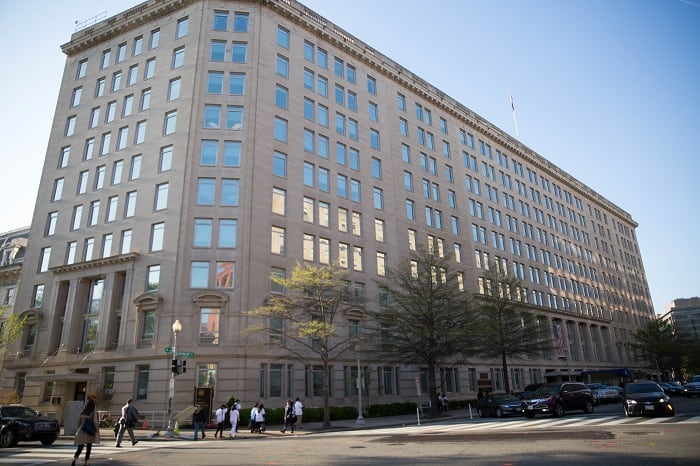source GAIA package: Sx_MilitaryTimes_M6201310311010018_5675.zip Origin key: Sx_MilitaryTimes_M6201310311010018 imported at Fri Jan 8 18:18:12 2016
During the 1990-91 Persian Gulf War, then-Navy corpsman David Ridenhour often browbeat troops in 1st Battalion, 5th Marines to take their medications — the anti-nerve agent pyridostigmine bromide and another pill, new to the market, to prevent anthrax.
Ridenhour took them. And while he doesn't completely blame his Gulf War illness symptoms on the drugs, he was interested to learn that last summer the Food and Drug Administration toughened its warnings for Ciprofloxacin, or Cipro, saying the potent antibiotic can cause severe and sometimes permanent nerve damage.
Ridenhour has that damage, known as peripheral neuropathy, which manifests as tingling and numbness in his limbs.
"They told us to start taking the Cipro, and I didn't know what it was for," he said. "But I clearly remember being told it was to prevent anthrax. Until then, as far as I knew, anthrax was a sheep disease."
It's been well documented that the Defense Department stockpiled 30 million doses of Cipro during the Gulf War, and 150,000 troops received anthrax vaccines to prevent infection. But less well known is that during Operation Desert Shield and Desert Storm, some troops actually took Cipro in anticipation of an anthrax attack.
According to Marine Corps documents, members of I Marine Expeditionary Force near Jubayl, Shaikh Isa and Bahrain International Airport and elsewhere took Cipro for a week or more as a prophylactic — although it was not approved to prevent or treat anthrax.
That approval from the FDA wouldn't come for nine more years.
"What gives me nightmares at night is that I feel like I helped poison the guys in my unit," Ridenhour said in a recent interview with Military Times.
Powerful antibiotics
Cipro and other fluoroquinolones — including Levaquin, Avelox and other medications with "flox" in their names — are powerful antimicrobials used to treat serious bacterial infections.
But along with potency comes a litany of precautions, warnings and side effects — information that service members and their families should consider when they are prescribed these medications, or when they request them to treat routine infections.
In 2008, the FDA added a boxed warning — its most serious alert — to fluoroquinolones, noting they can cause tendonitis and tendon rupture. In 2011, the agency added a second boxed warning, saying the medications can worsen the symptoms of myasthenia gravis.
And while the most recent warning for peripheral neuropathy is not the most severe alert, it is alarming. According to the FDA, nerve damage "may occur soon after these drugs are taken and may become permanent," and is unrelated to dosage levels.
The warning applies to oral medications as well as those delivered by injection.
"The onset of peripheral neuropathy after starting fluoroquinolone therapy was rapid, often within a few days. In some patients, the symptoms had been ongoing for more than a year despite discontinuation of the fluoroquinolone," according to the FDA.
In 2011, 23 million patients received prescriptions in the U.S. for Cipro and other fluoroquinolones, including 294,069 prescriptions dispensed at Defense Department facilities. From 2009 to 2012, a total of 1.2 million prescriptions for fluoroquinolones were distributed at military treatment facilities.
'Guinea pigs'
Cipro has a long history of use in the U.S. military, dating to at least 1989 when it was tested on soldiers in Egypt for travelers' diarrhea.
It was again widely used in the Persian Gulf War, although the number of those who actually took it is not well documented. Former troops who wrote Military Times said they took white pills that they later figured out were Cipro when the drug became more widely recognized and distributed.
"I'm one of those Marine combat veteran guinea pigs who took those pills," one former service member wrote. "I'm 100 percent service-connected [VA disability] because of the toxic soup we were exposed to and those damn pills."
Biological warfare experts and retired Marine Gen. Walter Boomer, who led I MEF during the Gulf War, said precautions were taken because the threat of an anthrax attack was legitimate.
By September 1990, Iraq had achieved industrial-scale production of anthrax, had stockpiled 30 tons of the medium needed to grow more and had shown no reservations about launching chemical attacks on its own people.
"We viewed [anthrax] with as much seriousness as their potential to use chemical weapons; ... I was presented by [U.S. Central Command] with these options that if we were attacked it would prevent an outbreak, so with that information, it was a fairly simple decision," Boomer said.
Scientists have spent years trying to determine what may have caused 250,000 Gulf War veterans to develop multiple and often debilitating symptoms after the war.
Because symptoms are varied and troops were exposed to a variety of environmental hazards, from oil well fires, pesticides, vaccinations, medications and possibly nerve agents, researchers say it will be difficult to pinpoint a cause.
But Ridenhour thinks the recent FDA warning may explain some of his symptoms. "It clearly says 'peripheral neuropathy,' and that's what I have," he said.
In 2000, the FDA approved Cipro to prevent inhalation anthrax after possible exposure, the first antibiotic approved as a treatment in the event of a biowarfare attack.
During the 2001 anthrax attacks, thousands of workers at the U.S. Postal Service, the White House, the U.S. Capitol and elsewhere took Cipro. The Department of Health and Human Services requested enough to provide 12 million people with doses for 60 days.
While Cipro and other fluoroquinolones are widely prescribed, their use has leveled off since 2002. Within DoD, prescriptions for fluoroquinolones actually are waning, down 14 percent since 2009, according to Pentagon data.




